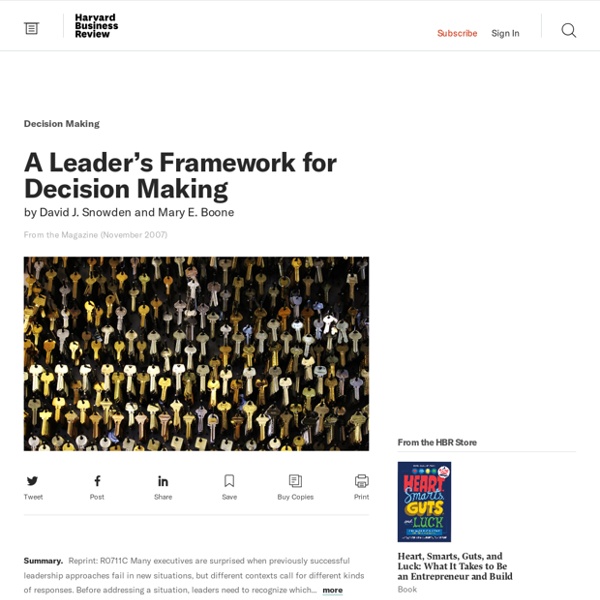Managing a manufacturing plant through the coronavirus crisis
As the COVID-19 pandemic sweeps across the globe, manufacturing organizations face significant operational challenges. Some companies have temporarily shuttered factories in response to government restrictions or falling demand, but others are facing significant increases in demand for essential supplies. Frontline manufacturing staff can’t take their work to the relative safety of their homes. Plant leaders are therefore looking for ways to operate through the immediate crisis—all while preparing for a potentially much longer period of heightened uncertainty regarding demand and supply, and a lasting need to maintain enhanced hygiene and physical distancing. Three areas of focus can help plant leaders navigate the transition from initial crisis response to the “next normal”:
How Humble Leadership Really Works
Executive Summary Top-down leadership is outdated and counterproductive. By focusing too much on control and end goals, and not enough on their people, leaders are making it more difficult to achieve their own desired outcomes. The key, then, is to help people feel purposeful, motivated, and energized so they can bring their best selves to work. One of the best ways is to adopt the humble mind-set of a servant leader. Servant leaders view their key role as serving employees as they explore and grow, providing tangible and emotional support as they do so.
2/15/15: Management corsets
One of the observations I have made over the years is that senior management and the coal face get complexity as a concept; mostly the problem is with middle management. Now I am not allocating blame here, it reflects the nature of the roles, and of course I am making very general statements. The real point is that people trying to direct the enterprise and people dealing with customers know about complexity on a day to day basis. So when you give them the science it legitimises what they already know.
Are You Leading Through the Crisis … or Managing the Response?
The coronavirus crisis, like every crisis, is unfolding over an arc of time with a beginning, middle, and end. It is useful to think what distinguishes what was, is, and will be. There was a past of relative stability and predictability. There now is chaos and disruption.
Relaxation techniques: Breath control helps quell errant stress response
The term "fight or flight" is also known as the stress response. It's what the body does as it prepares to confront or avoid danger. When appropriately invoked, the stress response helps us rise to many challenges. But trouble starts when this response is constantly provoked by less momentous, day-to-day events, such as money woes, traffic jams, job worries, or relationship problems. Health problems are one result.
4 Behaviors That Help Leaders Manage a Crisis
Executive Summary Employees thrust into leadership during a crisis need to be coached in four behaviors to be most effective in their roles. They must decide with speed over precision, adapt to changing circumstances boldly, reliably deliver despite environmental factors, and engage deeply with their teams.
How Leaders Are Navigating the Fourth Industrial Revolution - SPONSOR CONTENT FROM DELOITTE
Industry 4.0 holds the promise of a new era of globalization. Yet while our latest survey identifies companies successfully implementing Industry 4.0 technologies, many senior executives remain less prepared than they think they are. A year ago, Deloitte’s inaugural survey assessing private and public sector readiness for the Fourth Industrial Revolution observed a “tension between hope and ambiguity.” We found that while executives conceptually understood the profound business and societal changes Industry 4.0 may bring, they were less certain how they could take action to benefit.
8/17/18: Cherry-Picking to Overhype Jobs Gains from Tax Cuts
The GOP cherry-picked states with the largest number of job gains this year to promote its claim that “GOP tax cuts have fueled a massive acceleration in job growth since this time last year.” There has been a net increase in the number of jobs added in the first six months of 2018 compared to a similar period in 2017. But the nationwide gain isn’t nearly as dramatic as those individual states highlighted by the Republican National Committee, and in 12 states fewer jobs have been created this year. Economists tell us it is premature to assess the impact of the tax cuts on job creation. President Donald Trump frequently touts the impact of the Tax Cuts and Jobs Act — a Republican-crafted bill that the president signed into law on Dec. 22, 2017. And with the economy humming along, Republicans are quick to point to the bill as a catalyst for job growth.



